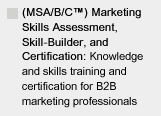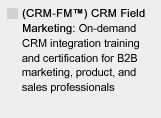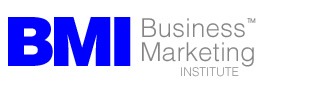MAKE SURE YOU CONTINUE TO RECEIVE EACH ISSUE OF TUESDAY MARKETING NOTES—CLICK HERE TO RENEW YOUR FREE SUBSCRIPTION (IF YOU'VE ALREADY SUBSCRIBED, NO NEED TO RE-SUBSCRIBE)

Does Your White Paper Have a Call to Action?
by Michele Linn, Linn Communications
One tenet of marketing is that all content should have a call to action. Seems basic enough, but is this really common practice with white papers? I did some very unscientific research, and the results may surprise you.
Jonathan Kantor provides a list of white papers each Friday in his blog, The White Paper Pundit. This is a somewhat random sampling of white papers; Jonathan describes the list as a list of white papers posted on Twitter that week that do not require registration.
So what did I find by checking his list? Out of the 40 white papers included in the list, only 12 included a call to action.
I defined a call-to-action as any copy that directed the reader to go for more information. Nine papers had an "About Us" section that included at least a Web site, but this did not qualify as these sections are boilerplate and not specific to the paper.
For those white papers that did include them, the calls-to-action were all over the board. As you might expect, there were a lot of phone numbers, e-mail addresses and links to home pages of Web sites. There were also some other contact methods and resources I thought worked well:
• Microsites
• Blogs
• Twitter IDs (only included in one white paper)
• Facebook website URL
• Specific web pages/resource pages
• Books
Is a Call-to-Action Really Important?
Is really that bad that only 30% of the white papers had a call to action? Yes! A recent study from InformationWeek found that most white paper readers (75.8%) go to a search engine to look for more information once they finish reading the white paper. By including a call-to-action, you increase the chance your reader will look at information that will help them learn more about your company instead of having them go to Google and stumbling across your competition.
Not only is it a good practice, but consider these two scenarios:
• If you are using a more sophisticated marketing automation system to track white paper leads, you want to be able to see which readers raise their hand for more info from you so you know who to prioritize;
• If you do not require registration for your white paper, you need to make your call to action very explicit so your reader knows what step to take because you won't be able to contact them to continue the conversation (becasue you won't know who they are)
What Makes a Good Call-to-Action?
As mentioned, many of the calls-to-action I observed were links to home page, e-mails and phone numbers, none of which I consider to be especially effective. To be more relevant, consider two things: Who your white paper is targeting and where it is meant to be used in the buying cycle.
Targets a Specific Reader
I like the generic buying roles that Steve Woods outlines in his blog, Digital Body Language: Economic buyer/decision maker, technical evaluator, user buyer, and influencer/coach.
It's imperative to understand which of these individuals your white paper is targeting as your call to action will be different for each. Think about it:
• Economic buyers: This group needs to be able to justify the expense. Calls-to-action for this group may be links to an ROI calculator or a case study of how a current customer saved money with your solution;
• Technical evaluators: This group aims to understand the technical feasibility of your solution. They want things like product specs and technical case studies;
• User buyer: This is the group that will be using the product, so they respond well to offers like demos and trials;
• Influencer/coach: These individuals are internal champions for your solution. They often forward your information, so an implicit call-to-action should be for them to forward this white paper and to make your white papers easy to share. Appropriate calls to action for this group will vary based on who those in this role are trying to influence
Moves Reader Through the Buying Cycle
If a reader is earlier in the buying cycle, you want to provide additional content that educates them on the general solution, perhaps another white paper, Webcast or case study written to move them along the path. I love the idea of microsites and resource pages as well.
Prospects who are more advanced want to be able to dig into your product or service, so it makes sense to offer features like demos, free trials and ROI calculators. Of course, white papers, Webcasts and case studies can also be used later in the buying process, but the content needs to address the concerns your prospects have at that stage in their buying cycle.
Michele Linn (http://www.linncommunications.com/) is a freelance marketing writer specializing in white papers, research reports, feature articles, case studies, and other B2B communications. Her business is devoted to making the job of B2B marketers easier by producing buyer-focused content and providing insights on how they can market it. She is also a founding member and frequent contributor to the Savvy B2B Marketing blog (http://savvyb2bmarketing.com/blog). Send her an email (michele@linncommunications.com) or follow her on Twitter (http://twitter.com/michelelinn)








